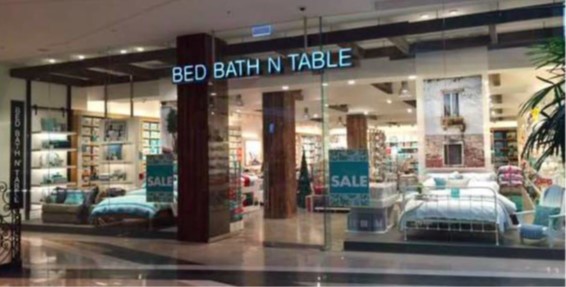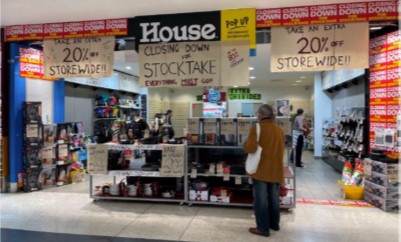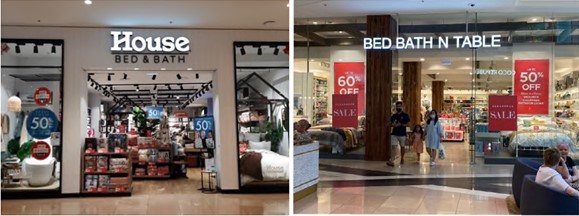For a retailer looking to expand the domain of its offerings, it may be logical to look to the existing retailers who are already succeeding for achieving commercial success. However, a retailer must take particular care when doing so, as going too far can amount to misleading or deceptive conduct in contravention of the Australian Consumer Law (ACL) and passing off.
In this article, we consider a recent decision of the Federal Court of Australia in Bed Bath ‘N’ Table Pty Ltd v Global Retail Brands Australia Pty Ltd [2023] FCA 1587. The two parties in the case had co-existed in distinct spaces in the broader homewares sector for over three decades. Global Retail Brands Australia Pty Ltd (GRBA) moved into the soft homewares domain, using a name incorporating words from the brand “Bed Bath ‘N’ Table”. Bed Bath ‘N’ Table Pty Ltd (BBNT), the owner of this brand issued proceedings, alleging trade mark infringement, contraventions of the ACL and passing off.
Background
Since 1976, BBNT has operated a network of stores across Australia under the brand “BED BATH ‘N’ TABLE” (BBNT Retail Stores). BBNT is one of the main speciality retailers of soft homewares products in Australia, selling textile goods (e.g. bedding and bed linen), bathroom products, household linen, kitchenware and other homewares. BBNT Retail Stores commonly has two large front windows featuring one or two beds made up in “Hamptons style”, as shown in the below example:
Since 1978, GRBA has operated retail stores in Australia under the brand “House”, selling kitchenware and hard homewares (e.g. pots, pans, plates, knives and cutlery) (House Retail Stores). House Retail Stores generally prominently feature the House logo, together with crowded displays and heavy discount signage, as shown in the below example:
In May 2021, GRBA launched the first retail store (First House B&B Retail Store) for its new soft homewares business “House Bed & Bath” (House B&B), selling bedroom and bathroom products and using the below logo which incorporated the words “bed” and “bath” to the “House” brand:
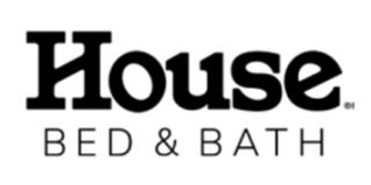
(House B&B Logo).
The presentation of the retail stores operating under the House B&B Logo (House B&B Retail Stores) differed to the typical House Retail Stores. An image of the First House B&B Retail Store featuring made-up beds in the front windows is shown below:
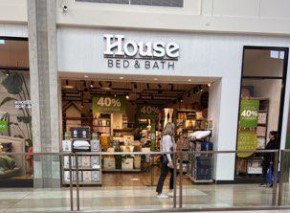
BBNT brought proceedings against GRBA, alleging that GRBA’s conduct in adopting the House B&B Logo and launching the First House B&B Retail Store amounted to misleading and deceptive conduct in contravention of the ACL and passing off. Its case against GRBA for trade mark infringement was unsuccessful.
Was GRBA’s conduct misleading or deceptive or likely to mislead or deceive?
Under the ACL, a person must not, in trade or commerce:
- engage in conduct that is misleading or deceptive, or likely to mislead or deceive (section 18); or
- make certain false or misleading representations, including that (section 29(1)):
- goods or services have sponsorship, approval, performance characteristics, accessories, uses or benefits (sub-section (1)(g)); or
- the person making the representation has a sponsorship, approval or affiliation (sub-section (1)(h)).
The judge held that GRBA had:
- engaged in misleading and deceptive conduct (contrary to s 18(1) of the ACL); and
- made false and misleading representations that House B&B Retail Stores were somehow associated or affiliated with BBNT (contrary to ss 29(1)(g) and (h) of the ACL).
The issue to be determined was the message that GRBA’s use of the House B&B Logo on the shopfront of the First House B&B Retail Store conveyed to the reasonable consumer (i.e. a member of the public looking to browse and/or buy soft homewares products). This required an assessment by the judge of all relevant context, including:
- BBNT had acquired an extensive reputation in “BED BATH ‘N’ TABLE” over 40 years in Australia in the soft homewares market;
- For over 40 years, BBNT was the only retailer in Australia which used the words “bed” and “bath” in its store name or external signage, and other retailers (particularly department stores) use such words inside stores as category descriptors;
- BBNT Retail Stores commonly had large front windows through which “Hamptons style” beds could be seen, whereas House Retail Stores generally had a “discount” look; and
- At the time of adopting the House B&B Logo, GRBA was aware of the existence and reputation of BBNT in the soft homewares sector.
In light of the above, the judge considered that the reasonable consumer, when coming across a House B&B Retail Store for the first time, would question whether there was an association between the two brands (for example, that House had either merged with BED BATH ‘N’ TABLE or taken it over). Further, GRBA’s wilful blindness as to the potential for confusion between the House B&B Logo and “BED BATH ‘N’ TABLE” was relevant to the question of whether its conduct was in fact likely to deceive. The judge rejected GRBA’s argument that it had chosen “BED & BATH” because those words are appropriate category descriptors, and inferred that it had done so in the belief that there would be a market benefit (i.e. to leverage off BBNT’s reputation in the two words in that particular order).
The judge’s conclusion was further reinforced by the similarities in store get-up as shown in the images below (although such presentations are typical for soft homewares stores), as well as evidence of instances of consumers questioning whether such an association existed.
Given that GRBA’s conduct was found to be misleading or deceptive, the judge was also satisfied that GRBA was liable for passing off.
Takeouts
From this decision, traders should be cautious to borrow elements of their competitors’ get-up, even if those elements are descriptive. In doing so, there is risk that a court will find that the impression formed by such conduct gives rise to misleading conduct in contravention of the ACL and passing off.

For further information, please contact:
Jane Owen, Partner, Bird & Bird
jane.owen@twobirds.com


